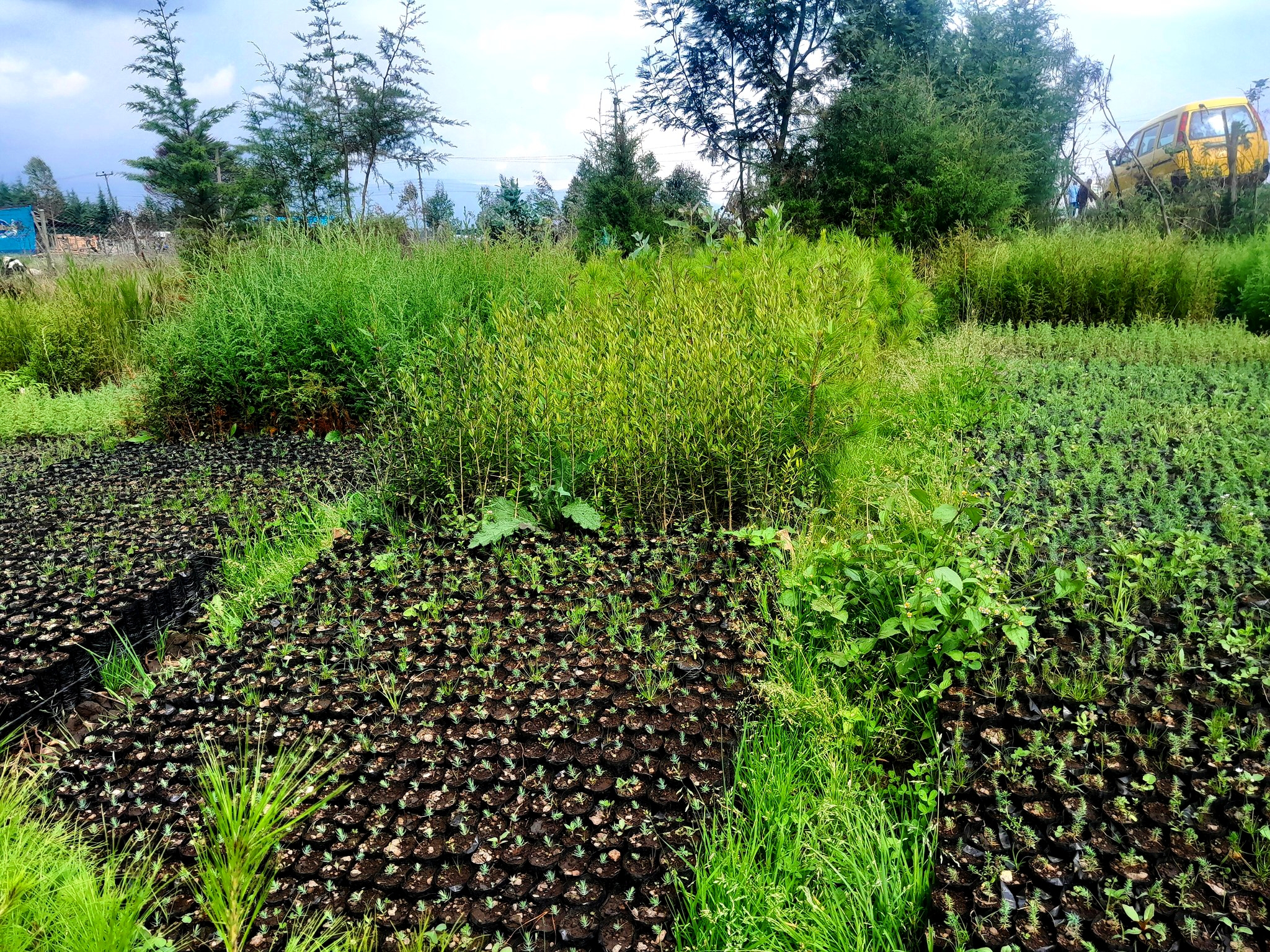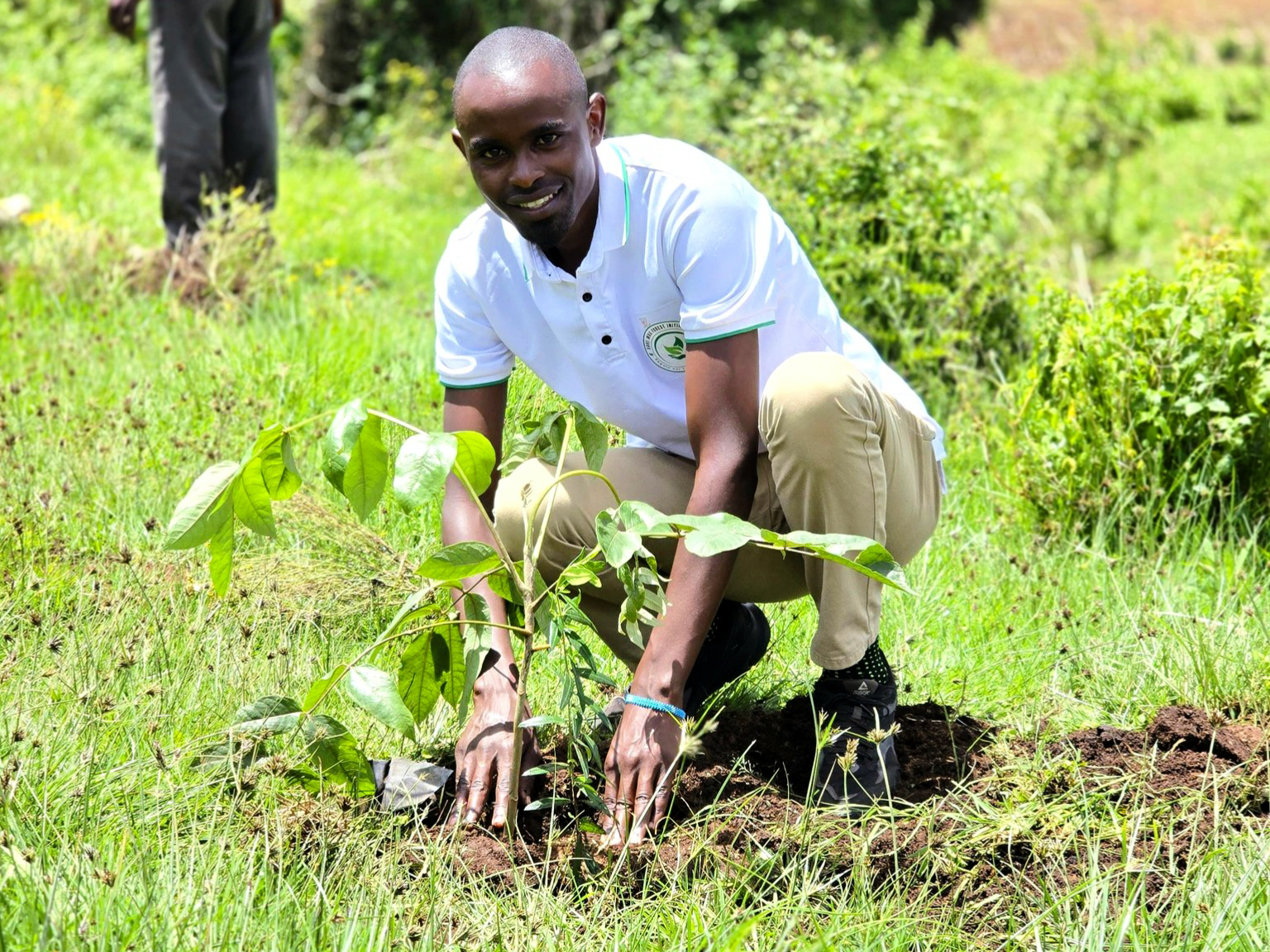Ogiek Lead Revival of Njoro River to Restore Kenya’s Mau Forest
Organization: Save Mau Forest
2025 LOCAL ADAPTATION CHAMPIONS AWARD FINALIST
The Njoro River has long been lifeblood for the Indigenous Ogiek community—hunter-gatherers who live in the Mau Forest, in the Rift Valley of Kenya. Its waters and the forest are mutually interdependent, one sustaining the other. But years of unchecked deforestation, soil erosion, and unsustainable farming practices left this once-thriving river scarred. Springs dried up, floods became common, and water turned murky with sediment.
Perceiving that their culture, food and water sources, spiritual places, and identity itself were under threat, the Ogiek came together in 2018 under the Ogiek Peoples’ Development Program to launch the Save Mau Forest Initiative—a bold initiative to restore a 4.5-kilometer stretch of degraded riparian land along the Njoro River.
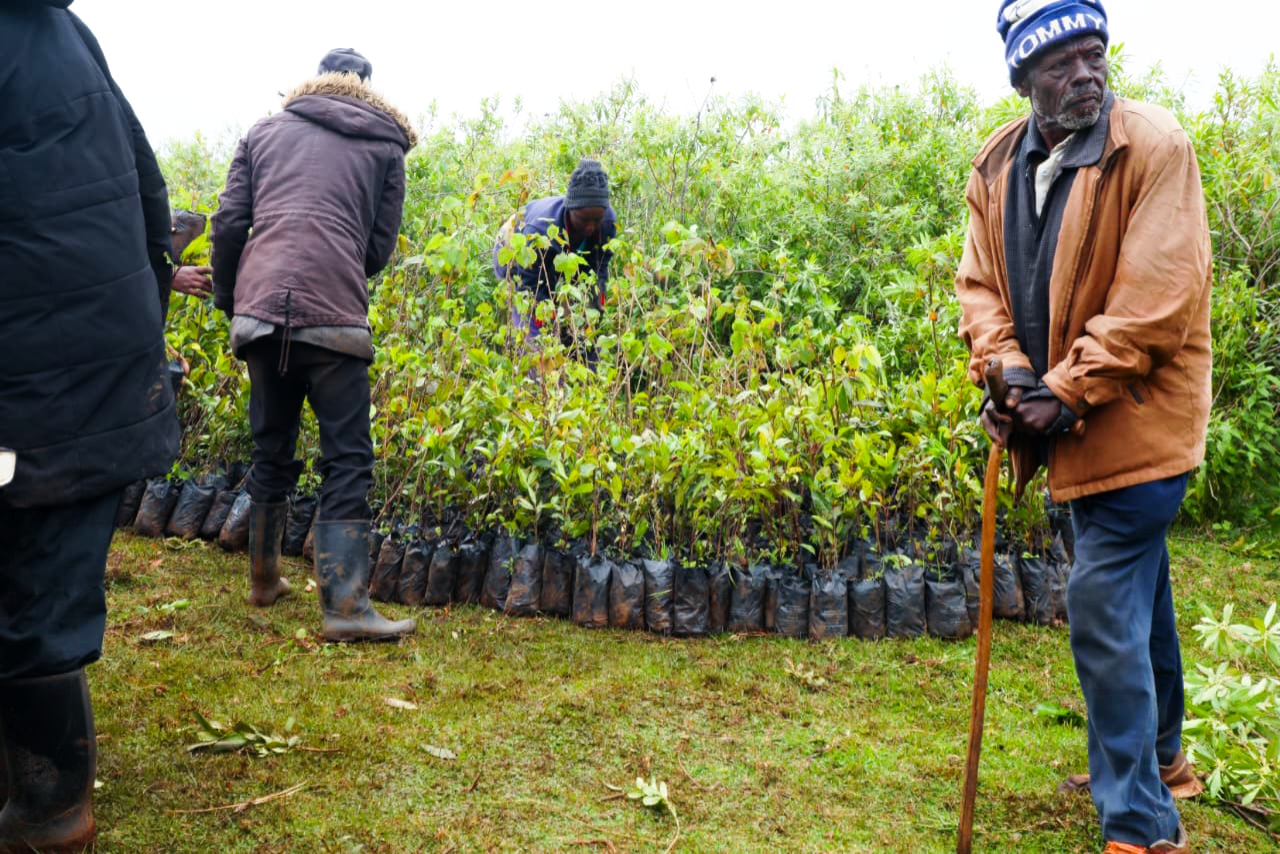
Through riparian restoration, slope terraces, and agroforestry, the project reduces erosion, enhances soil health, improves water retention, and restores biodiversity, protecting both livelihoods and ecosystems from climate shocks. It secures water sources by safeguarding catchments, recharging springs, and reducing pollution, ensuring reliable access to clean water for farming, cultural practices, and daily use. Over 1,200 community members, especially women and youth, gain skills in sustainable farming, tree nursery management, and environmental stewardship, diversifying incomes and strengthening adaptive capacities.
Community barazas (dialogue meetings) brought together elders, women, and youth to design interventions that aligned with cultural traditions. Working with the Kenya Forest Service (KFS), the community has planted tens of thousands of native trees in degraded forest blocks. Elders guided species selection and farmers contributed Indigenous knowledge of soil and seed preservation.
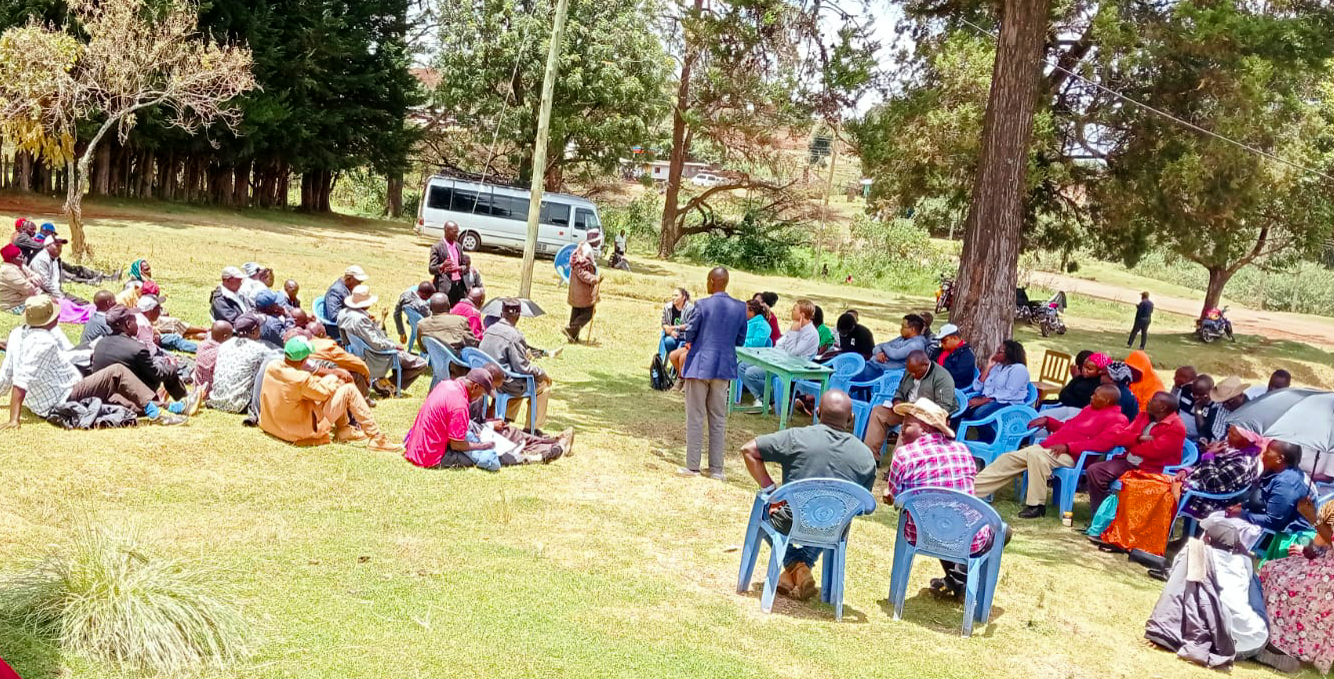
The emphasis is on choosing the right species that are rooted in culture—indigenous rather than exotics, because native species help maintain soil structure, water infiltration, and spring recharge. Sacred trees (such as mugumo or strangler fig) have a special place because these are not merely spiritual landmarks but also anchors of biodiversity and forest health. Endangered and indigenous trees such as African cherry (Prunus africana) and parasol tree (Polyscias kikuyuensis) were also included.
Following the tree planting efforts, local Ogiek volunteers use their deep cultural knowledge of the forest’s terrain to aid in monitoring for illegal logging, forest fires, encroachment, charcoal production and other threats. They provide intelligence to KFS rangers, help enforce forest rules, and have been trained and equipped—for example with uniforms and radios—so they can act effectively.
Forest Management Plans are being developed for Community Forest Associations in key catchment areas, under projects like the Integrated River Njoro Catchment Management for Enhanced Ecosystem Services and Livelihoods. These plans guide what gets restored, what conserved, and how local people are involved.
Recognizing that the destruction of the forest is often driven by economic necessity, initiatives have provided alternative income and sustainable practices. These include beekeeping, dairy farming improved via training (for instance, on artificial insemination), value-chain support for crops, and education in sustainable agriculture. People now see real economic benefits of investing in conservation.
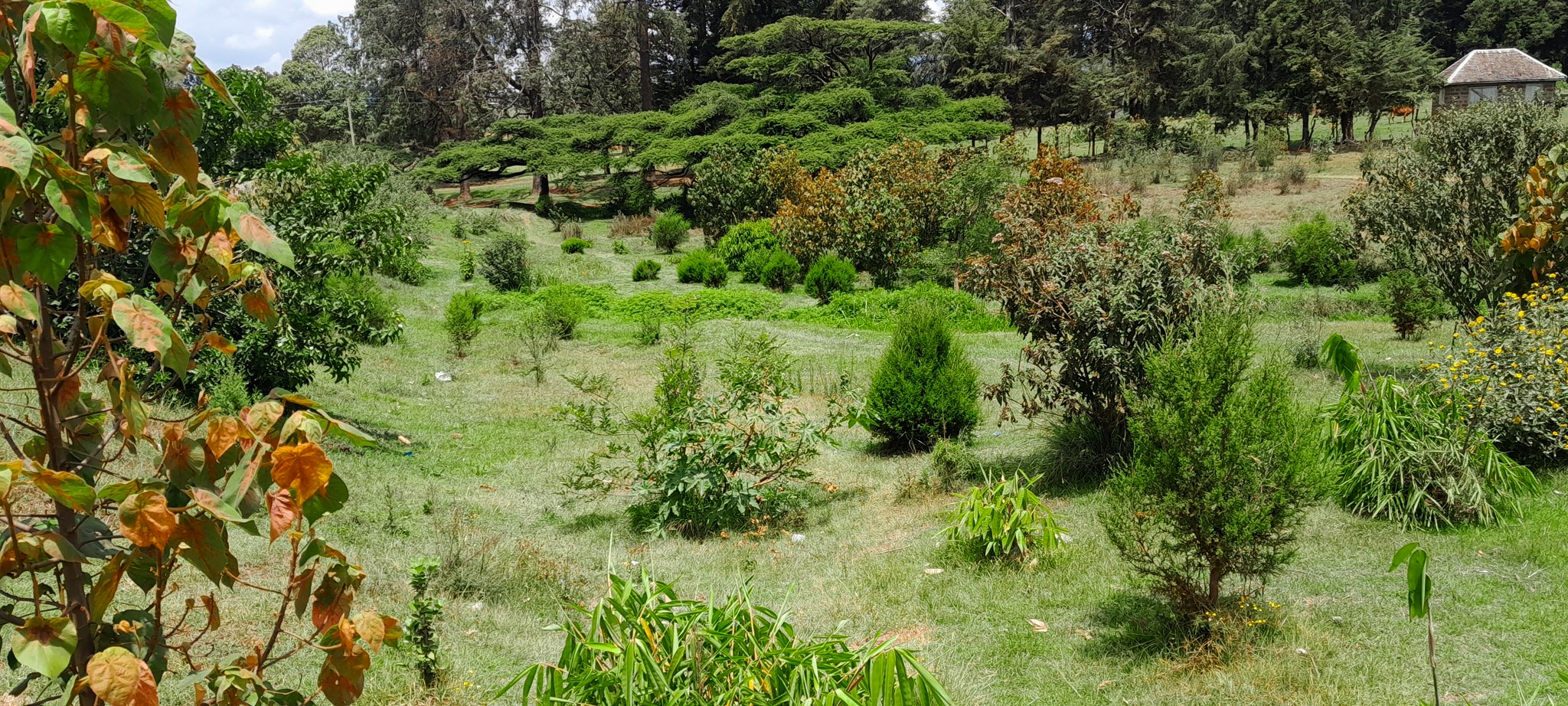
River, Forest, and Community are Beginning to Bounce Back
As a result of the efforts, springs and water catchments in areas restored with indigenous trees are reported to be more reliable and water flow has improved where native vegetation is reestablished. Forest cover loss, which had been severe (for example, between 2001-2022 Mau lost ~19% of its tree cover, ~533 km²) is being countered through reforestation and protection efforts. Agroforestry and nursery enterprises provide food and income while diversifying families’ options in the face of climate shocks.
Meanwhile, community ownership is growing: people once frustrated by evictions or top-down policies are taking part in decision making—planting native species, protecting shrines, agreeing forest management plans. This builds trust and ensures interventions are relevant.
The Ogiek-led restoration of the Mau Forest weaves together ecological science and indigenous knowledge in choosing native species, knowing sacred sites, and understanding micro-geographies of springs and watersheds. It gives communities decision-making power, with tools and roles in enforcement and restoration. It creates economic alternatives, so conservation is not a sacrifice, but an investment. It also creates partnerships with government bodies (KFS and county governments), to formalize forest management plans, and ensure legal recognition of rights.
As restoration expands, the Ogiek and partners are focusing on implementing more Forest Management Plans across all Community Forest Associations in the Mau catchment, especially for the Njoro River basin; expanding tree nurseries; organizing seed banks or seed-rescue efforts (of saplings that are endangered or threatened by encroachment); strengthening community monitoring and forest patrols to protect new growth and enforce rules; and supporting sustainable livelihood enterprises more broadly to reduce pressure on the forest.
The initiative is restoring relationships: between people and land, culture and nature, heritage and policymaking. The health of Njoro River and Mau Forest depends as much on community strength, legal justice, and equitable practices as on seedlings and terraces.
